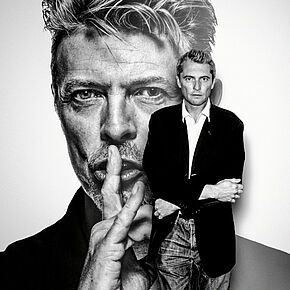
Lot 5 | Paula Modersohn-Becker | Sitzender Junge mit Mädchen auf dem Schoß
1876 Dresden - 1907 Worpswede
Title: Sitzender Junge mit Mädchen auf dem Schoß.
Date: Ca. 1903.
Technique: Tempera and oil on cardboard.
Mounting: Mounted on card.
Measurement: 40 x 52cm.
Notation: Confirmed verso on the cardboard: Original von Paula Modersohn-Becker, Fischerhude, 5 VIII 23, Otto Modersohn.
Frame/Pedestal: Framed.
Provenance:
- Otto Modersohn
- Alois Heinemann, Osnabrück (acquired through Martha Vogeler in the early 1940s)
- Private collection Osnabrück
- Graphisches Kabinett-Kunsthandel Wolfgang Werner KG, Bremen
- Private collection Berlin (acquired from the aforementioned in 1996)
Exhibitions:
- Städtisches Museum, Osnabrück 1949, cat. no. 40, ill.
- Otto Modersohn Museum, Fischerhude 2007
- Museum Kunst der Westküste, Alkersum/Föhr 2014, p. 19, ill. 61
Literature:
- Busch, Günther/Werner, Wolfgang (eds.): Paula Modersohn-Becker, 1876-1907 - Werkverzeichnis der Gemälde, vol. II, Munich 1998, cat. rais. no. 399, ill.
- Wolff-Thomsen, Ulrike (ed.): Paula Modersohn-Becker & Otto Modersohn - Die Amrum-Reise 1903, Alkersum/Föhr 2014, p. 19, ill. 61
- The portraits of Worpswede peasant children are the artist's most popular and sought-after motifs, which today are counted among the masterpieces of European art
- She expresses the soulful depths of the child's mind in a unique way
- Through her holistic artistic thinking, she develops an abstract pictorial language that can only be regarded as pioneering
During Paula Modersohn-Becker's entire creative period, portraits of children occupy a special position. Especially from 1903 on, the artist increasingly chose this motif as the subject of her paintings. For this she found her models among relatives and acquaintances, but preferred the children of the peasant population and from the poorhouse in Worpswede.
The children in our oil painting certainly belong to the latter group. Here we see a boy sitting on grassy ground with his legs outstretched, holding a girl, perhaps his sister, tightly. Without any narrative element, Modersohn-Becker reproduces the two in close cropping. In doing so, she captures the small bodies in shadowy form and largely dispenses with physiognomic details. She marks the girl's eyes with two blue dots and even covers the boy's face with his cap. The painter also does not give a more precise geographical location of the children. For where we would assume the horizon at the upper edge of the picture, she paints a broad brown bar - a reference to an adjacent field? In this way, the artist sensitively and subtly emphasizes the immediacy of the perceived moment: very close together and turned in on themselves, the two dwell in their own world. Access to this is denied to us outsiders.
If we disregard the moment of the two children being together, we see first and foremost the juxtaposition of color surfaces in cool colors, which are contrasted by warm earth tones. This free approach reveals Modersohn-Becker's artistic independence and painterly autonomy. The fact that she transgressed taboo boundaries in the process is shown, for example, by Otto Modersohn's reaction: "Paula hates the conventional and now falls into the mistake of preferring to make everything angular, ugly, bizarre, wooden. The color is splendid - but the form? The expression! Hands like spoons, noses like flasks, mouths like wounds, expression like cretins. She charges herself too much. Two heads, four hands on the smallest surface, under that she doesn't do it, and in addition children. It is difficult to give her advice, as is usually the case." (Diary entry 26.9.1903, quoted from Günter Busch/Lieselotte von Reinken (eds.): Paula Modersohn-Becker in Briefen und Tagebüchern, Frankfurt a.M. 1979, p. 370) Modersohn-Becker was well aware that, in her search for new possibilities of expression, she was daring to do much with her painting that was not (yet) recognized during her lifetime. But regardless of this, she developed an abstracting pictorial language that encompassed her holistic painterly thinking and into which she incorporated her feelings and sensation. Thus, in her portraits of children, the painter succeeds in expressing a unique penetration of the child's life of the soul, which never fails to captivate us. It is precisely the unconventional painterly means, which transports the inner beauty of the human being, that makes Paul Modersohn-Becker world famous.
Modern, Post War & Contemporary Art
+49 221 92 58 62 300
| Recommend lot |
Conditions of this Lot
32% buyer’s premium on the hammer price
Estimated shipping costs for this lot:
Arrangement after the auction.
Paula Modersohn-Becker Germany North German Expressionism Modern Art 1900s Figure / Figures Painting Oil Child / Children


